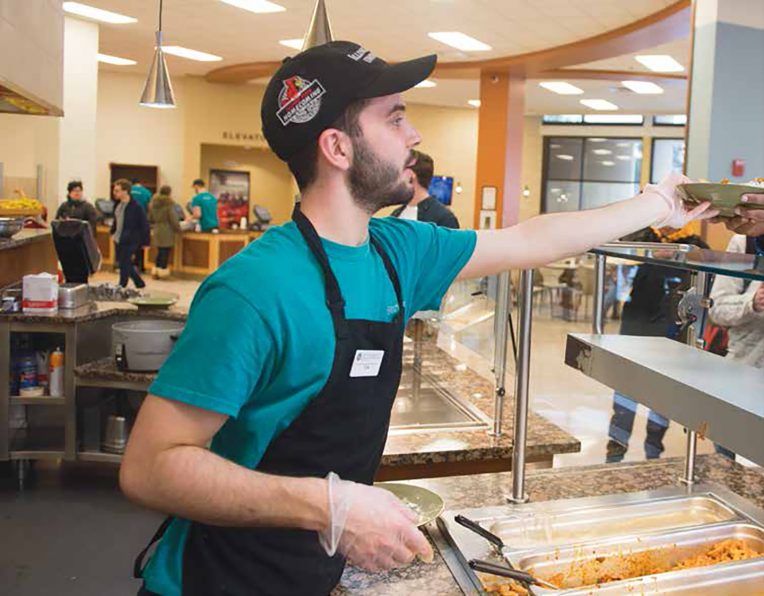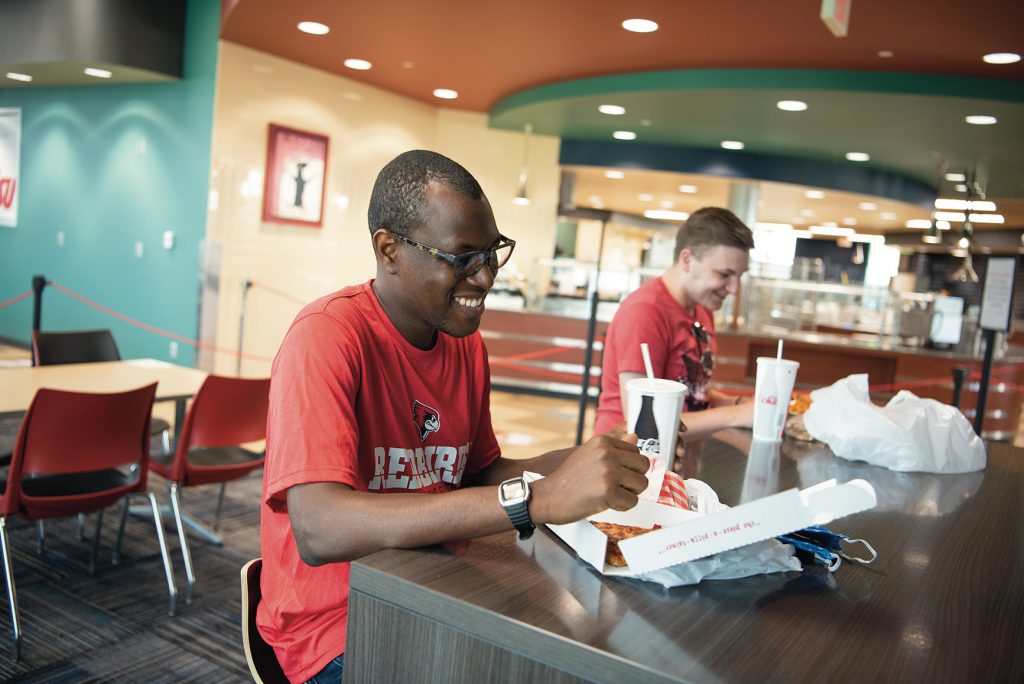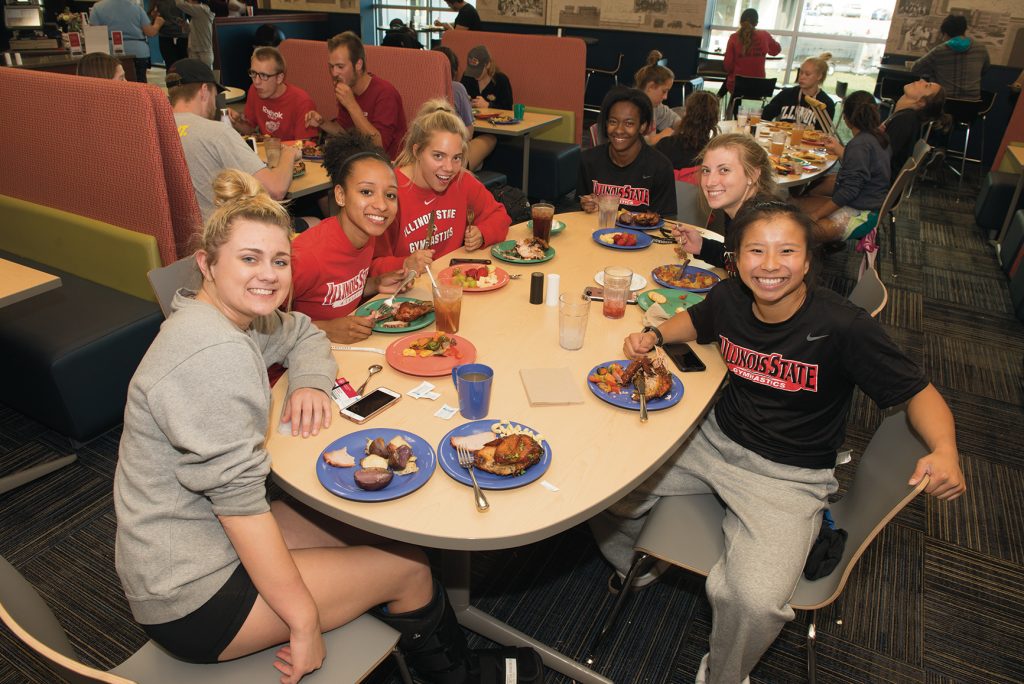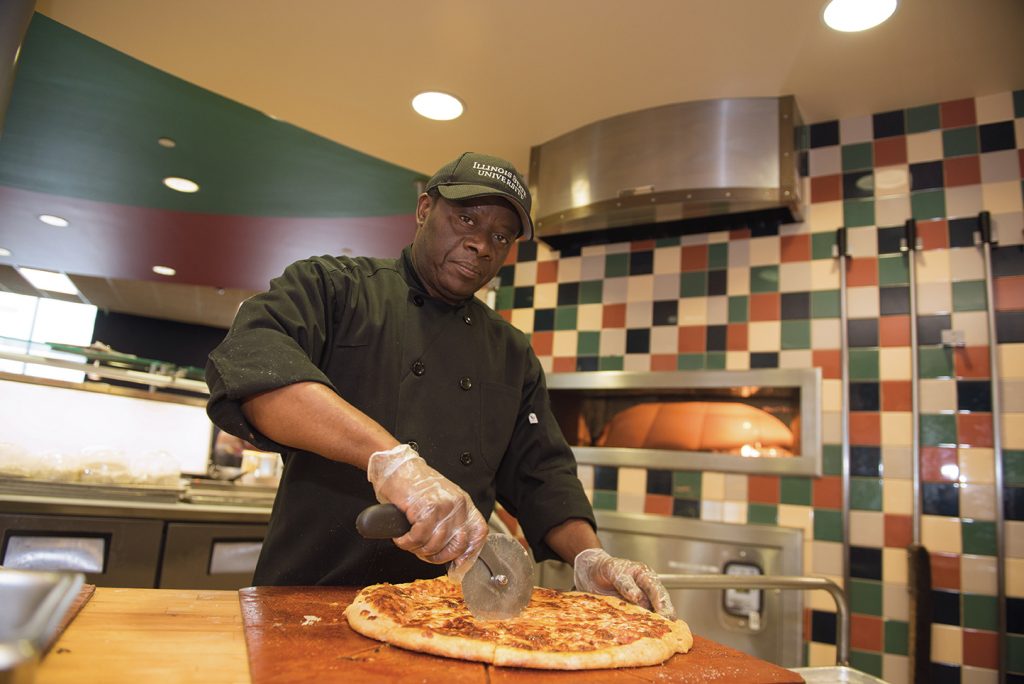Whether studying over breakfast, meeting classmates for lunch, or reconnecting with friends at dinner, the University’s dining centers are an integral part of daily ISU life.
Today’s dining experience is radically enhanced from what is remembered by older alums, who had to eat in their residence hall. There were minimal options of entrees that were served in a single-file line.
Appears InCurrent Redbirds have a surprising number of choices at Watterson Dining Commons in Watterson Towers and Marketplace at Linkins in Tri-Towers. Fresh fruits, vegetables, and a variety of proteins and grains are always available.
Staff in Event Management, Dining, and Hospitality create dishes that fit the needs of every student, from gluten-free and no dairy to vegan and vegetarian. Registered dietitians work with individuals who have specific needs. And while the main entrees change daily, there are standard offerings that include a salad bar, pastas, pizza, burgers, and deli sandwiches.
Whatever is being served, quality and taste remain the priority. Both are more easily obtained with the opening of the Culinary Support Center (CSC) in 2019 at Watterson. It is there that Executive Chef Matthew Horton ’12 and the culinary team create recipes and prepare food in bulk for campus locations.
“Developing more complex food safety plans and logistical systems takes time and requires a great team of individuals brainstorming ideas on best practices,” Horton said. “The CSC allows us to generate more ideas and push our culinary program higher and higher.”
The center occupies two floors and includes a cook-chill production area and cold prep room, as well as a bakery and test kitchen. One benefit is that there is a consistency to the taste and quality of food because it is made in the one space, then distributed across campus.
Another positive is the ability to prepare meals in volume. A smoker, for example, prepares up to 350 pounds of meat.
The centralized bakery has state-of-the-art ovens, mixers, and bagel makers.
Horton is pleased that the CSC allows staff to “make scratch recipes, control ingredients, reduce sodium, and eliminate allergens to make food more accessible to all students.” He also appreciates having a test kitchen where students can provide feedback on recipes being created.
“We test based on what our customers are asking for,” said Adam Feaman, assistant director of the CSC. “The test kitchen allows us to experiment with new products and still maintain our highest standards.”
Students appreciate not only the quality of their meals but the service as well. They have the option to get meals to go and when not feeling well, food can be delivered to their rooms.
There are several food options beyond the dining halls. The newly renovated Bone Student Center offers McAlister’s Deli, Star Ginger, Qdoba, The Landing, Timbers Grill, and Starbucks. Other campus dining options include Airport Lounge in the Wonsook Kim College of Fine Arts complex, Business Bistro in the State Farm Hall of Business, Milner Café in the library, a second Starbucks location, and four Subway restaurants.
Regardless of where students choose to dine, they find food that fits their tastes and lifestyle, adding one more reason to the list of why they enjoy their Redbird experience.




